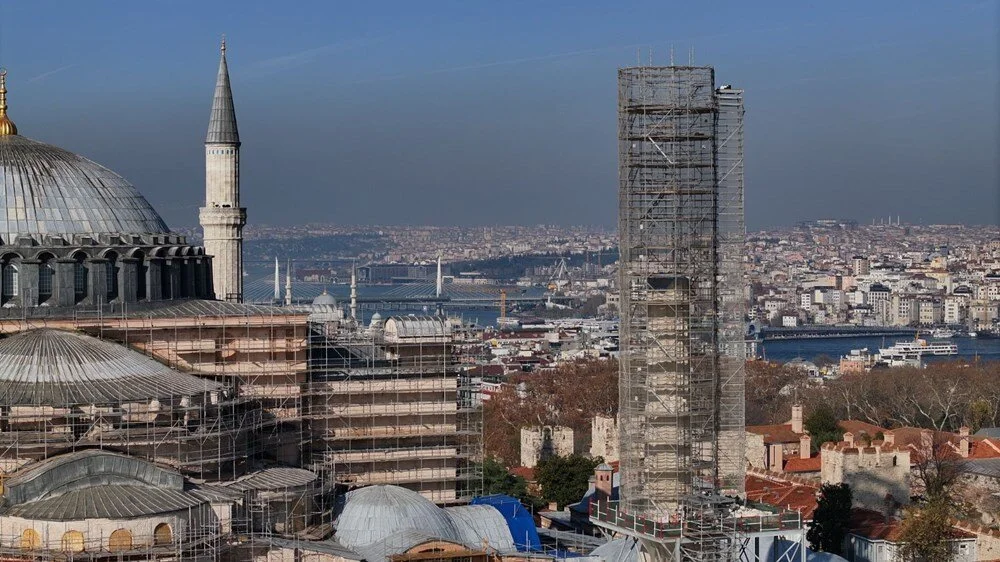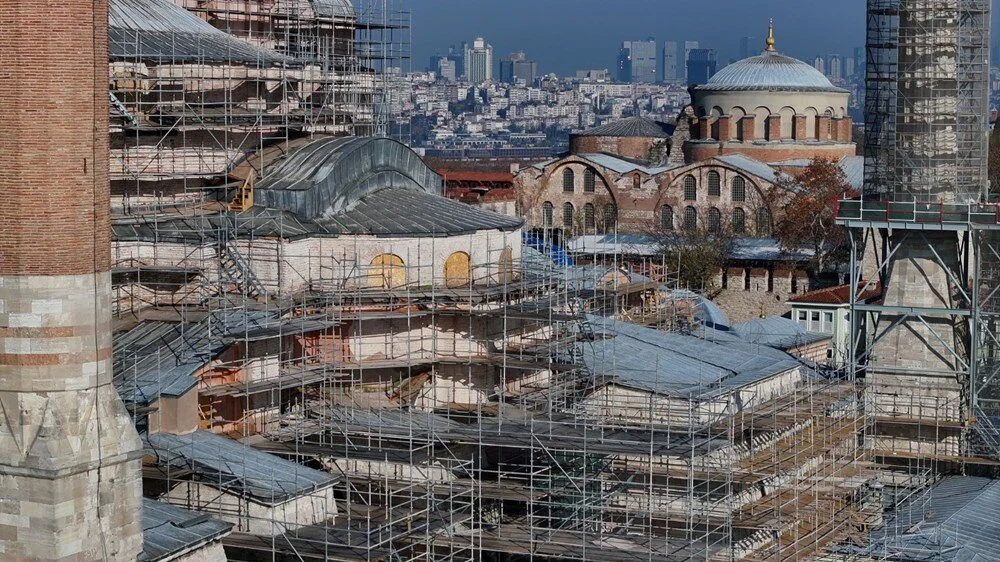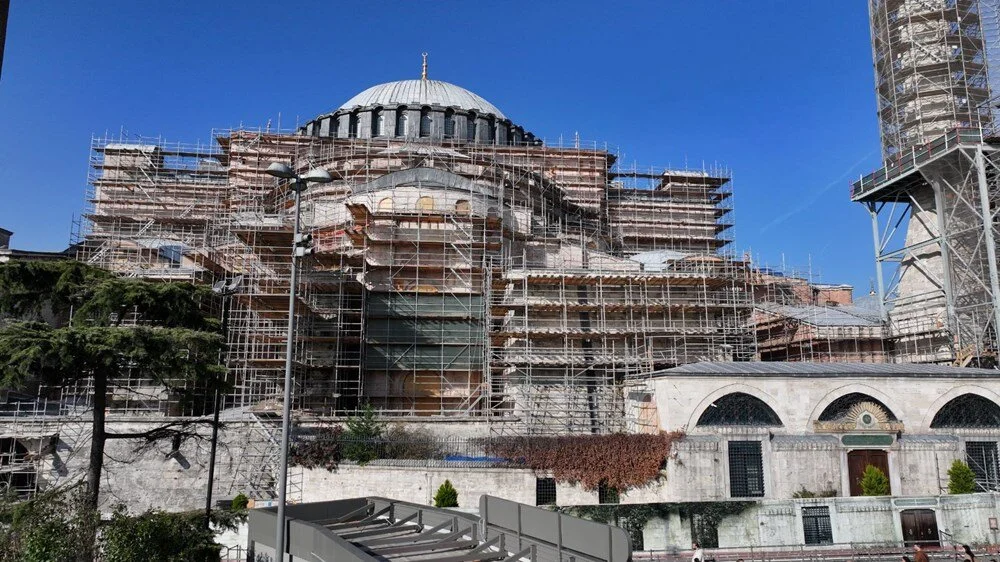
The dome of Hagia Sophia will be dismantled for restoration
Hagia Sophia, one of the most famous structures in the world, will have its dome dismantled for restoration.
As one of the most important examples of Byzantine architecture, Hagia Sophia is notable for the size of its dome and the grandeur of its interior decorations.
Once serving as a museum, Hagia Sophia was reopened for worship on July 24, 2020, under the name Ayasofya-i Kebir Cami-i Şerifi, following a decision by the Turkish government.

A scientific committee has been established for the restoration of Ayasofya-i Kebir Cami-i Şerifi. In the first phase, restoration processes for the Tomb of Sultan Mehmed III, the Tomb of Sultan Selim II, the Tomb of Sultan Murad III, the Princes’ Tomb, and the Muvakkithane Sıbyan Mektebi have been completed under the supervision of the committee.
The second phase has taken a holistic approach to the structures, and a work program has been prepared. Work has begun on the most damaged facade, the north wall. A working axis has been established, and efforts continue on the main dome and the semi-domes.

Prof. Dr. Ahmet Güleç, a member of the Scientific Committee for the restoration of Ayasofya-i Kebir Cami-i Şerifi, stated, “The lower part of the dome is covered with mosaics, and it is very difficult to intervene statically from there. Therefore, interventions will be made from the upper part to ensure the dome is restored to a healthy state. The related studies and projects are almost complete. After approval, a protective roof is planned for the upper part of the dome. This will also be a significant undertaking. Calculations are currently being made. Thus, when we open the dome, applications can be carried out without being affected by environmental conditions such as rain, snow, and water. We expect this work to take place around March or April.”

Güleç emphasized that all maintenance and repair work will be carried out without disturbing the visitors and worshippers at Hagia Sophia, stating, “There will be a need to set up a skeleton structure inside. We have to do that because we need to support the ceiling within the dome from the inside. We are currently in the project planning phase for this. We aim to do it in a way that disturbs our visitors and worshippers as little as possible. We are trying to create a reasonable scaffolding.”
Restoration work will utilize plaster that was used during the Ottoman period.
You may also like
- A 1700-year-old statue of Pan unearthed during the excavations at Polyeuktos in İstanbul
- The granary was found in the ancient city of Sebaste, founded by the first Roman emperor Augustus
- Donalar Kale Kapı Rock Tomb or Donalar Rock Tomb
- Theater emerges as works continue in ancient city of Perinthos
- Urartian King Argishti’s bronze shield revealed the name of an unknown country
- The religious center of Lycia, the ancient city of Letoon
- Who were the Luwians?
- A new study brings a fresh perspective on the Anatolian origin of the Indo-European languages
- Perhaps the oldest thermal treatment center in the world, which has been in continuous use for 2000 years -Basilica Therma Roman Bath or King’s Daughter-
- The largest synagogue of the ancient world, located in the ancient city of Sardis, is being restored











Leave a Reply